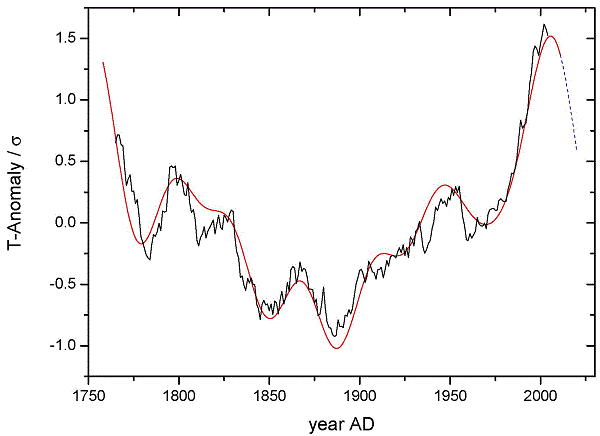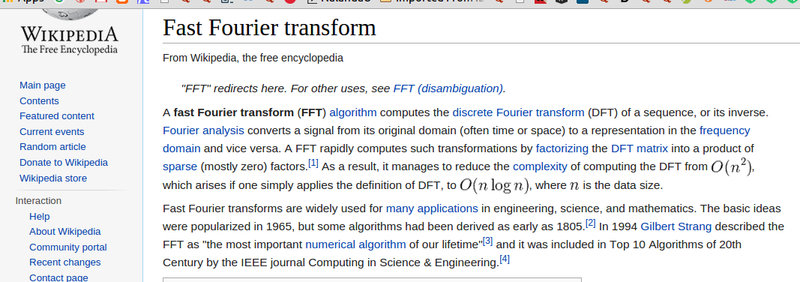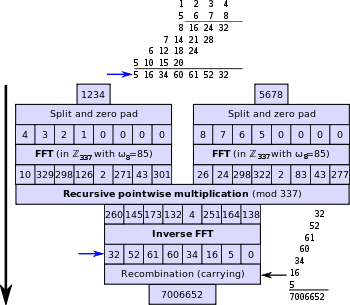Fast Fourier Transform
Contents
-
Need of this algorithm
-
Big Idea
-
What it does
-
Wiki Definition
-
Working of the Algorithm
-
Mathematical Aspect
-
Roots of the Unity
-
Applications
-
Refrences

Noisy
Less Noisy
Big Idea
-
Change representation of Mathematical Objects
- Some representations have efficiency benefits over other
Polynomial of degree 2 denotes 3 numbers which represents the polynomial.
n-1 degree indicates n coefficients
if we have n coefficients then we are able to get a n-1 degree polynomials.
what it does
Takes input in the form of polynomial
Evaluate it into n points
What the wiki says about it!


IFFT
FFT
Coeffiecients Form
Point-wise Form
N- Points Curve
Degree of n-1 polynomial
FFT
Input:
Output:
n coefficients
Point-Wise Representation
Brute force method to evaluate A at n points
solve the large problem by
solving smaller problems
and combining solutions
Evaluates degree n poly on the nth roots of UNITY
Last Remaining Issue:
Roots of UNITY
should have n no of solution and we need to find them.
consider for j = 0,1,2,3, ...., n-1
Squaring the nth roots of the unity

Produce the set of n/2 roots of the unity
Fact:
squaring the nth roots of the unity
results in n/2th roots of the unity
Evaluate at a root of the unity
nth root of the unity
n/2th root of the unity
n/2th root of the unity
combine results using the equation:
returns n points.
Applications
Multiply two numbers in nlogn time.

Schönhage–Strassen Algorithm
Faster than Karatsuba Multiplication Algorithm
Refrences
-
CS 4102-https://www.cs.virginia.edu/~shelat/4102/ -
https://www.youtube.com/watch?v=2V7XT_iiRRw -
http://www.cs.cmu.edu/afs/cs/academic/class/15451-s10/www/lectures/lect0423.txt -
https://en.wikipedia.org/wiki/Sch%C3%B6nhage%E2%80%93Stras sen_algorithm - https://en.wikipedia.org/wiki/Fast_Fourier_transform
THANK YOU
deck
By Rushal Verma
deck
- 1,225



